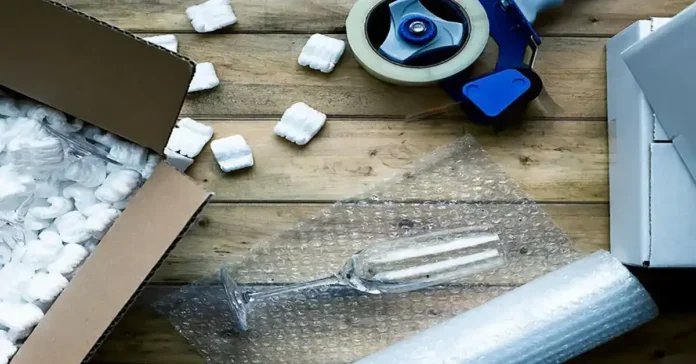Properly packing fragile items is like giving them a cozy blanket for a journey—keeping them safe and snug. Imagine your favorite delicate vase or a cherished family heirloom making its way to a new home without a scratch. That’s the magic of understanding the significance of careful packing during a move.
In this guide, we’ll unravel the secrets to safeguarding your delicate belongings as you move. It’s more than just putting things in boxes; it’s about ensuring that each fragile item reaches its destination unharmed. From grandma’s antique china to the sleek TV, we’ll cover it all in simple, easy-to-follow steps.
So, whether you’re a moving pro or embarking on your first adventure, join us in this journey to master the art of packing fragile items. Let’s ensure your delicate treasures are not just things you own but cherished memories that arrive intact at your new doorstep.
Packing Fragile Items – Assessment
Start it by identifying delicate belongings, which include breakable items like glassware, ceramics, and sentimental valuables. Pay attention to items that can easily chip, crack, or shatter. When it comes to electronics, extend your focus to gadgets such as computers, televisions, and delicate appliances. Special considerations are needed for these electronic items, as they often contain sensitive components that can be easily damaged during transit.
Fragile electronic items may require additional protective measures, such as anti-static packaging materials, to safeguard them from potential harm. By identifying the delicate nature of your belongings, you lay the foundation for a successful packing strategy.
Gathering Packing Supplies for Fragile Items
Gathering the right packing supplies is the foundation for a secure transition. Start with the packing materials, including sturdy boxes in various sizes, high-quality packing tape, and cushioning materials like bubble wrap and packing paper. These basic supplies create a protective barrier for fragile items, preventing unnecessary movements and potential damages. Dealing with electronic items, consider specialized supplies such as anti-static bubble wrap and foam inserts to shield delicate components from static electricity and impact.
Sturdy boxes should be reinforced with ample packing tape, ensuring the structural integrity of the container. Utilize bubble wrap and packing paper generously to provide a soft cushion around delicate items during the move.
Below are the important points that you need to keep in mind:
- For devices with complex connections, take pictures of how the cords are arranged and connected. This will make the set-up process easier at your new house.
- For fear of losing/ displacing the pictures, you can also label the wire with the connections it has to ports, plugs, switches, etc.
- Then disconnect and dismantle your electronic devices. If you have the manufacturer’s guide on how to do this, then refer to it. If not, get an online downloadable version.
- Portable storage devices like CDs and DVDs should be removed from laptops and PCs and put in their cases.
- Wrap each individual device separately using bubble wrap so that no two of them rub against each other and are damaged. Avoid material that can conduct electricity.
- Put only 1 device in each box. Do not be skimpy here.
- Seal the box with tape. Label it ‘fragile’, ‘do not drop’ and ‘this side up’ with a permanent marker to clearly indicate how the box should be kept in the car/ truck.
Wrapping Techniques
Proper wrapping techniques play a pivotal role in ensuring the safety of delicate and electronic items during a move.
- Using bubble wrap and packing paper is a tried-and-true method to shield fragile belongings from potential damage. For electronics, ensure screens and components are covered securely to prevent scratches or impact.
- Cushioning fragile items effectively involves placing ample packing material within boxes to absorb shocks and vibrations.
- Fill any gaps with additional bubble wrap or packing paper to create a snug fit, preventing items from shifting during transit.
- Match the size of the box to the dimensions of the delicate or electronic items to avoid unnecessary movement.
Labeling & Loading of Fragile Items
Clear and specific labels play a crucial role in ensuring their safety during a move. Clearly labeling boxes with fragile items helps both you and the movers handle them with the utmost care. Indicate the contents of the box and use arrows to signify the correct upright position. This simple step not only helps prevent accidental damage but also makes the unpacking process smoother.
Electronics demand special handling to avoid potential damage, and labeling them appropriately is key. Indicate which side should stay upright and use labels such as “Handle with Care” or “Electronics Inside.” This extra layer of communication ensures that everyone involved in the move is aware of the fragility of these items.
Loading Fragile Items
Distribute weight evenly to avoid toppling and ensure that delicate items are snugly fit within the boxes. For electronic items, secure them within the box using additional padding or foam to absorb any shocks during loading. Place heavier items at the bottom and surround them with lighter, cushioned belongings.
Final Words
Properly securing delicate items and electronics ensures they arrive at your new home unscathed. Remember to assess each fragile item, gather the right packing supplies, and use techniques like bubble wrap and proper cushioning. Choosing suitable boxes and labeling them clearly is equally important for organized packing and unpacking.
During the move, take care in loading and transporting fragile items, ensuring they are positioned securely in the moving vehicle. Upon reaching your new space, employ gentle unpacking methods, setting up electronics cautiously. Remember, a little extra care in packing fragile items goes a long way in ensuring a successful and damage-free move. Best of luck with your move, and may your delicate items arrive safely at their new home!
FAQs
A: Use sturdy boxes, wrap each item in bubble wrap, and fill empty spaces with packing peanuts or crumpled paper for extra protection.
A: It’s not recommended, as the ink can transfer to your items. Go for acid-free tissue paper or bubble wrap for safer packing.
A: Place them vertically in the boxes, wrap them with bubble wrap, and add extra padding at the bottom.
A: Use the original packaging if available, or wrap electronics in anti-static bubble wrap and secure them in well-padded boxes to prevent damage.
A: It’s better to avoid mixing heavy and delicate items. Pack fragile items separately to prevent breakage due to the weight of heavier items.
A: Clearly labeling boxes as “Fragile” ensures that movers handle them with extra care and places them in a position where they’re less likely to be crushed.
A: Yes, disassemble fragile furniture to make it easier to pack and reduce the risk of damage during transportation.
A: Use picture boxes or create a custom box, wrap each piece in bubble wrap, and add extra padding to protect corners and edges.
A: While clothing can provide additional padding, it’s recommended to use proper packing materials like bubble wrap to ensure optimal protection.
A: Yes, considering insurance for delicate and valuable items provides additional financial protection in case of any unexpected damage during the moving process.







